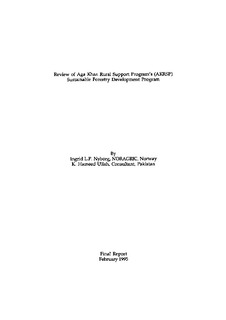| dc.description.abstract | The Northern Region of Pakistan forms the upper limits of the Indus basin, and cover around 7.04 million hectares (ha). It is dominated by jagged granite, snow covered Hindu Kush mountains in the northwest, the Karakoram mountains in the northeast and the great Himalayan mountain range in the central east. The climate is dry and the precipitation is mostly as snow. Extremes of temperature, dry and hot in summer and dry and cold in winter are characteristic. Precipitation is erratic and varies at the highest elevations between 120-150 mm/year, decreasing with decreasing elevation. The climate in the high mountain valleys is cold and dry with severe winters with minimum temperature touching to below zero. Precipitation is 10-20 mm in summer and 50-100 mm in winter.
The entire Northern region area covers the 5 districts of NA and Chitral district of NWFP. The population is around 800,000 and the people live in villages and small towns in valleys. The cropping pattern is unique, shifting from double cropping to single cropping as altitude increases. Cultivable land is minimal, and with increasing pressure from a growing population the people are dependent on food imports into the area. Fuelwood requirements due to the extremely cold winters are high, and increasing. This has caused much pressure on the natural resources and resulted in the overuse of the resources for immediate fuel and fodder needs.
For the amelioration of the condition of people in the area the Aga Khan Rural Support Program (AKRSP) initiated various activities in certain selected areas in 1982. The objects laid included: 1. Raising the incomes and quality of life of people living in remote mountainous regions. 2. Developing institutional and technical models for equitable development. 3. Evolving sustainable, long-term strategies for managing natural resources productively in a dry and fragile mountain enviroment.
The activities of AKRSP have included village organization and institutionbuilding, production of physical infrastructure, village savings and credit, agriculture and resources management, commercial and industrial development and human resource development. Starting in Gilgit, the program gradually expanded to other areas i.e. Baltistan, Chitral and Astore. | nb_NO |

